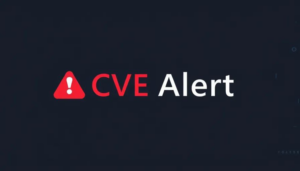CVE Alert: CVE-2025-9503 – Campcodes – Online Loan Management System
CVE-2025-9503
A security vulnerability has been detected in Campcodes Online Loan Management System 1.0. Affected is an unknown function of the file /ajax.php?action=save_borrower. The manipulation of the argument lastname leads to sql injection. Remote exploitation of the attack is possible. The exploit has been disclosed publicly and may be used.
AI Summary Analysis
Risk verdict
High risk: publicly disclosed remote SQL injection with PoC evidence and no authentication required; exploitation could be automated, so treat as priority.
Why this matters
attacker can potentially read or alter sensitive borrower data, compromising customer trust and regulatory posture. If the database is misconfigured or contains weak access controls, data integrity and availability could be disrupted, affecting loan processing and financial reporting.
Most likely attack path
attacker sends crafted input to the web application via an unauthenticated, remote request to the vulnerable AJAX endpoint; no user interaction required and no privileges needed. With per-transaction SQL injection, data exfiltration or manipulation is plausible, and low impact on the host is suggested, though database compromise remains feasible if the app privileges are misused. Precondition is network access to the app and unparameterised queries.
Who is most exposed
publicly accessible deployments of Campcodes Online Loan Management System (v1.0) on common web stacks, especially in small-to-mid sized organisations with exposed loan-processing endpoints and insufficient input sanitisation or patch management.
Detection ideas
- spikes in SQL error messages or database error codes in application logs
- unusual or malformed values in the lastname field or bulk test payloads
- anomalous, repetitive requests to the vulnerable endpoint from external IPs
- increased DB query time or long-running queries tied to the endpoint
- WAF/IDS alerts for SQLi patterns targeting the application
Mitigation and prioritisation
- apply vendor patch or upgrade to a fixed version; if unavailable, implement compensating controls and disable the vulnerable endpoint where feasible. Treat as priority 1.
- enforce parameterised queries and strict input validation; audit and restrict the application’s DB account privileges to least privilege
- deploy network/WAF protections with SQLi signatures; enable detailed logging and alerting on the endpoint
- conduct rapid change-management: test fix in staging, then patch production within 0–3 days; prepare rollback plan
- implement ongoing monitoring for exfiltration indicators and anomalous data access patterns
A considerable amount of time and effort goes into maintaining this website, creating backend automation and creating new features and content for you to make actionable intelligence decisions. Everyone that supports the site helps enable new functionality.
If you like the site, please support us on “Patreon” or “Buy Me A Coffee” using the buttons below
To keep up to date follow us on the below channels.


